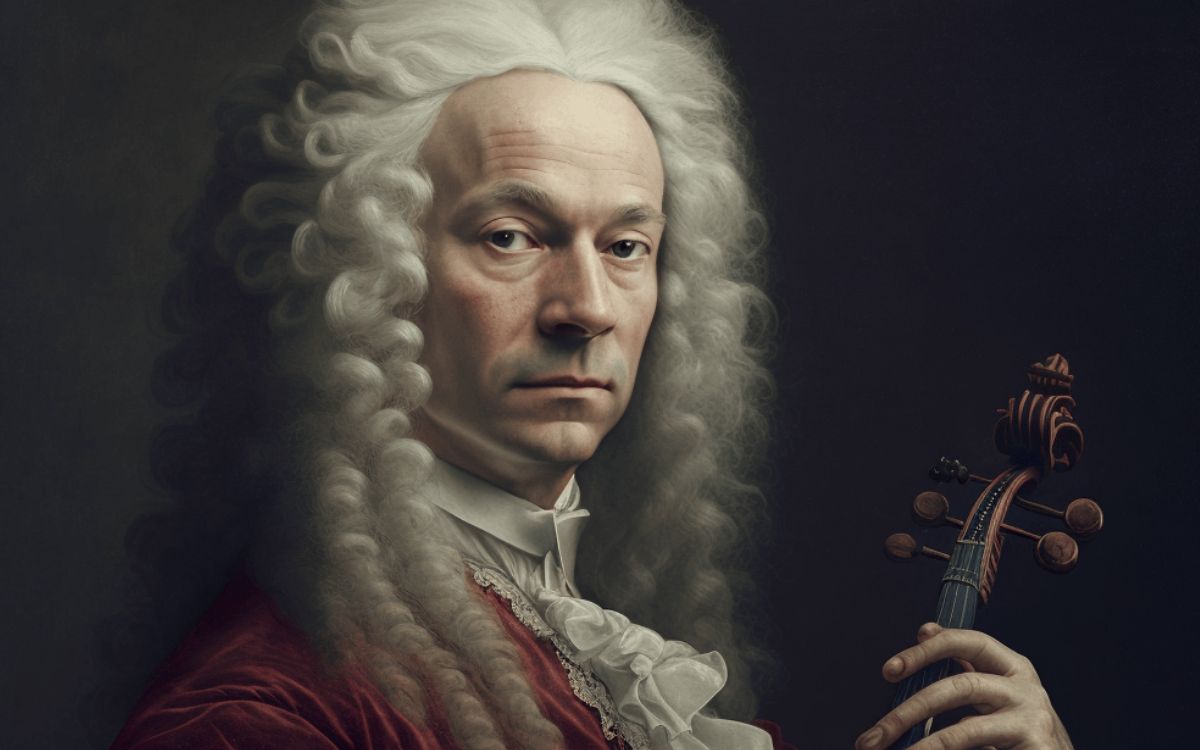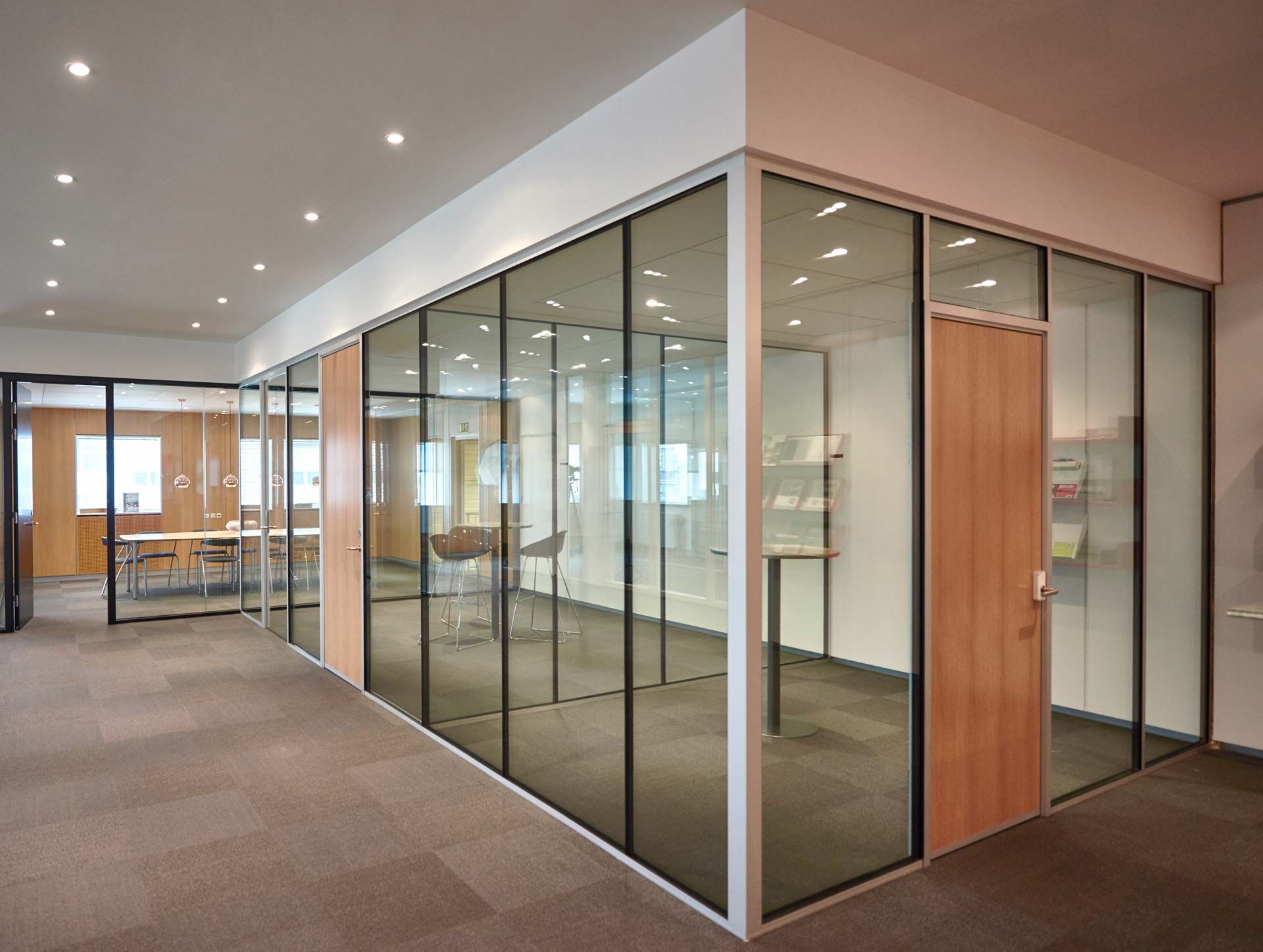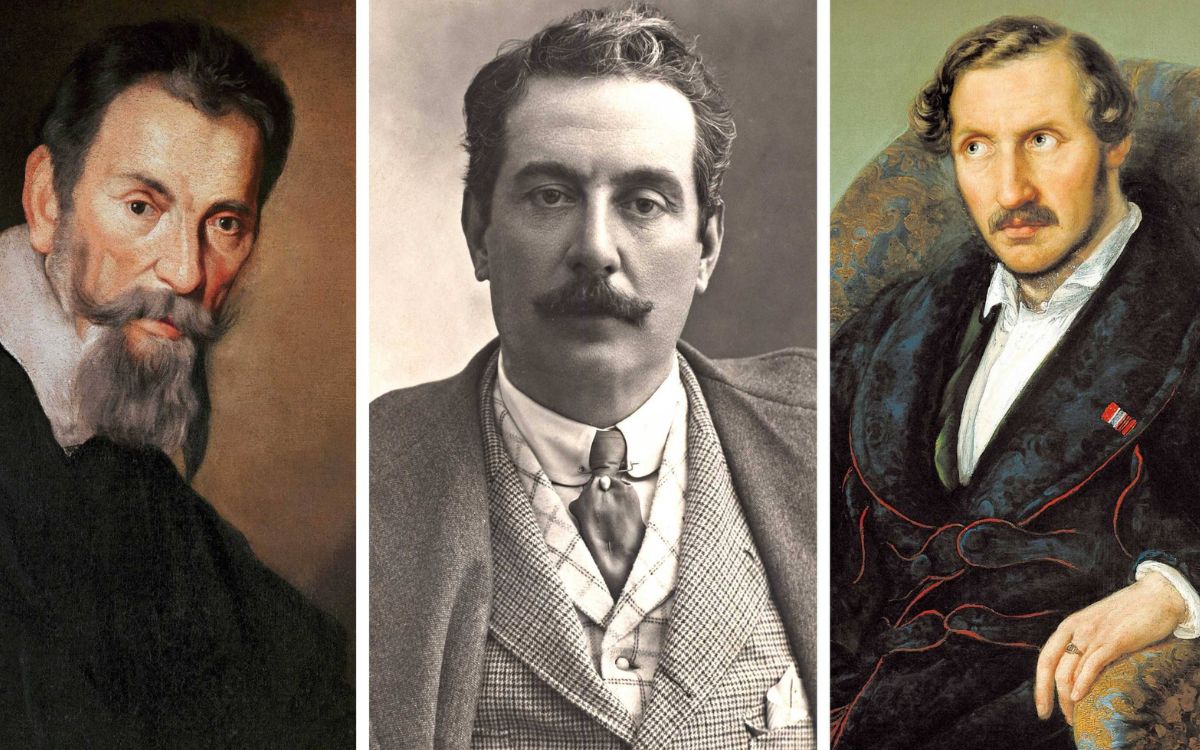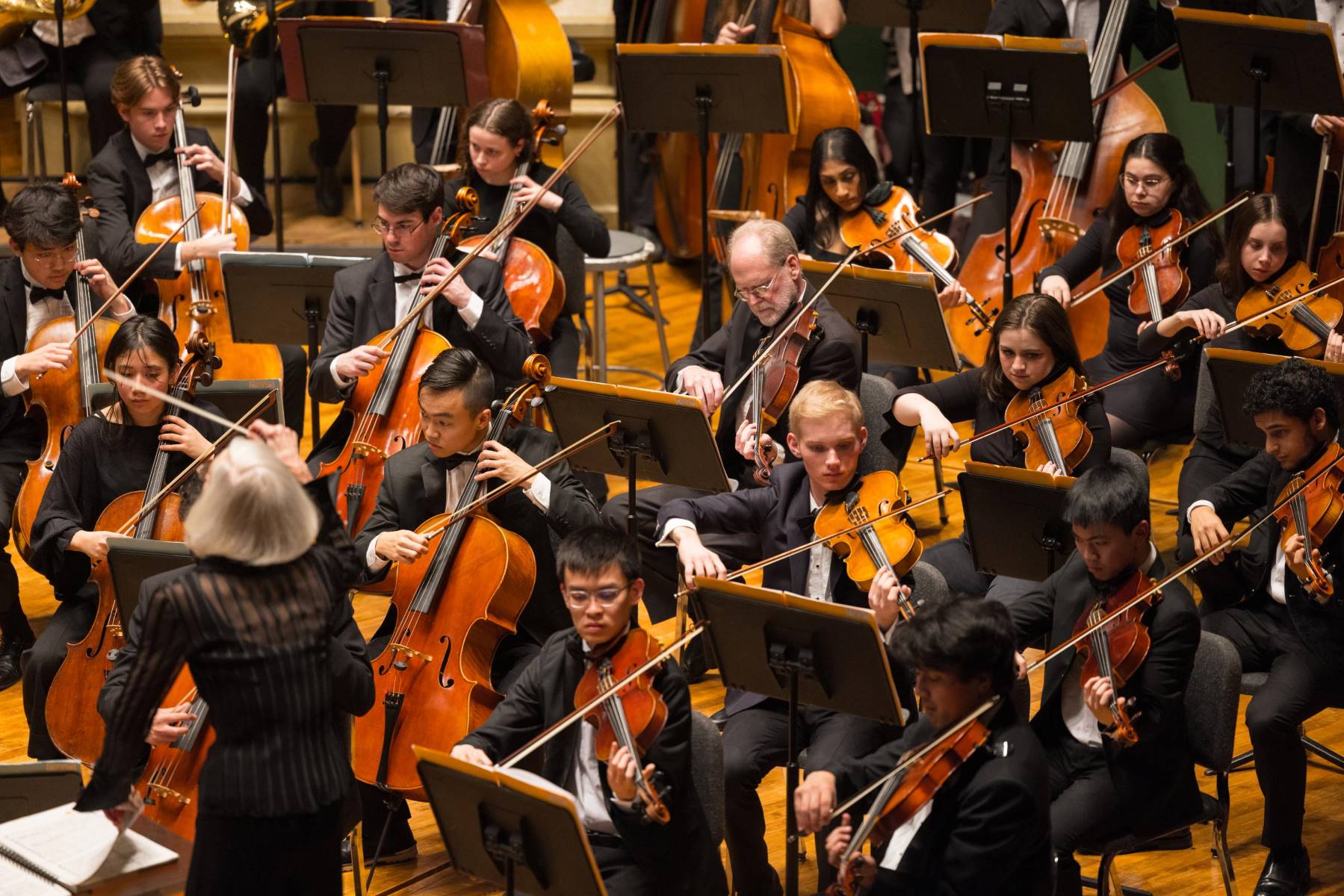Home>Production & Technology>Composer>What Famous Composer Wrote For The Glass Armonica?


Composer
What Famous Composer Wrote For The Glass Armonica?
Modified: January 22, 2024
Discover the famous composer who wrote enchanting melodies for the glass armonica. Uncover the musical genius behind this extraordinary instrument.
(Many of the links in this article redirect to a specific reviewed product. Your purchase of these products through affiliate links helps to generate commission for AudioLover.com, at no extra cost. Learn more)
Table of Contents
- Introduction
- History of the Glass Armonica
- The Invention of the Glass Armonica
- How the Glass Armonica Works
- Famous Composers and Their Works for the Glass Armonica
- Composer 1: Wolfgang Amadeus Mozart
- Composer 2: Ludwig van Beethoven
- Composer 3: Franz Schubert
- Composer 4: Richard Strauss
- Composer 5: Camille Saint-Saëns
- Conclusion
Introduction
The glass armonica, also known as the glass harmonica or the armonica, is a unique musical instrument that produces ethereal and hauntingly beautiful sounds. It is notable for its unusual construction, with glass bowls or goblets of different sizes mounted on a spindle and played by touching the edges of the glasses with moistened fingers or with a special device called a glass armonica bow. This mesmerizing instrument was invented in the 18th century and quickly gained popularity among composers and musicians of the time.
Throughout history, many famous composers have been inspired by the enchanting tones of the glass armonica and have composed music specifically for this instrument. These compositions showcase the versatility and captivating qualities of the glass armonica, highlighting its ability to evoke a sense of mystery, atmosphere, and otherworldly beauty.
In this article, we will explore the history of the glass armonica, delve into its unique mechanism, and take a closer look at some of the famous composers who wrote music for this extraordinary instrument. Join us as we embark on a journey through the realms of classical music and discover the magical allure of the glass armonica.
History of the Glass Armonica
The history of the glass armonica dates back to the 18th century when it was invented by Benjamin Franklin. Franklin was inspired by the musical glasses, an instrument consisting of tuned wine glasses filled with varying amounts of water. Fascinated by the ethereal and haunting sounds produced by the glasses, Franklin set out to create a more practical and versatile instrument that could replicate and expand upon this concept.
In 1761, Franklin unveiled his invention, which he named the “glass armonica.” The instrument consisted of a series of glass bowls or goblets of different sizes, mounted horizontally on a spindle. The glasses were arranged in order of size, with the largest at one end and the smallest at the other. To play the instrument, one would touch the edges of the glasses with moistened fingers or a specialized glass armonica bow, creating friction and producing a resonant sound.
The glass armonica quickly gained popularity across Europe, captivating composers, musicians, and audiences alike. Its unique and hauntingly beautiful tones were unlike anything heard before, making it a sought-after instrument among both amateurs and professionals.
However, as the popularity of the glass armonica grew, so did concerns about its potential effects on the players and listeners. Some claimed that the intense and sustained exposure to the vibrating glass bowls could cause physical and mental health issues, including nervous disorders. These anxieties, combined with the instrument’s delicate nature, led to a decline in its popularity by the early 19th century.
Despite its decline in popularity, the glass armonica left an indelible mark on the world of music. Its ethereal sound and unique mechanism have continued to captivate musicians and composers throughout the centuries. Today, the glass armonica is experiencing a resurgence of interest, with dedicated musicians reviving its tradition and showcasing its haunting beauty to new audiences.
The Invention of the Glass Armonica
The glass armonica, also known as the glass harmonica or the armonica, was invented by the renowned American polymath, Benjamin Franklin. Franklin’s fascination with music and science led him to experiment with different instruments and sound-producing devices. The glass armonica was one of his most significant creations.
Inspired by the musical glasses, Franklin sought to improve upon the instrument’s design and create a more versatile and practical version. In 1761, he unveiled his invention to the world, mesmerizing audiences with its enchanting and ethereal sounds.
The core elements of the glass armonica are the glass bowls or goblets, which are mounted horizontally on a spindle. Each glass bowl is carefully selected and tuned to a specific pitch, creating a harmonious and melodic range of notes. The glasses are mounted in order of size, with the largest at one end and the smallest at the other, allowing for a seamless transition from low to high tones.
To play the glass armonica, the musician lightly wets their fingers with water to create friction and touches the edges of the glasses as the spindle rotates. This produces gentle vibrations, resulting in a hauntingly beautiful sound that resonates throughout the instrument. Alternatively, a specialized glass armonica bow can be used to create sustained notes and elaborate melodies.
The glass armonica’s innovative design allowed for a wide range of expression and dynamics. By varying the pressure and speed of the finger movements, musicians could create rich and delicate melodies, evoking a mesmerizing atmosphere. The instrument’s unique sound quickly captured the imagination of composers and musicians of the time.
One of the reasons behind the glass armonica’s popularity was its ability to produce sustained notes. Unlike some other instruments of the period, such as the harpsichord or the fortepiano, the glass armonica did not require the player to constantly strike or pluck the keys to sustain a sound. This characteristic gave the glass armonica a distinct advantage in creating a continuous and seamless musical experience.
Franklin’s invention quickly gained attention and acclaim across Europe, with virtuosos and composers embracing the glass armonica’s unique capabilities. It became particularly popular in Vienna during the late 18th century and found its way into the works of many prominent composers.
As with many inventions, the glass armonica faced some challenges and controversies. Some believed that the sustained exposure to the vibrating glass bowls could have negative effects on the player’s health, including nervous disorders. These concerns, combined with the delicate nature of the instrument, contributed to its eventual decline in popularity.
Despite this decline, the glass armonica’s legacy lives on, inspiring generations of musicians and composers to explore its enchanting and haunting qualities. Today, dedicated performers continue to showcase the instrument’s unique sounds, ensuring that Benjamin Franklin’s invention continues to captivate audiences and evoke a sense of wonder.
How the Glass Armonica Works
The glass armonica is a fascinating instrument that produces sound through the vibration of glass bowls or goblets. The instrument’s unique design allows for a wide range of melodic possibilities and expressive capabilities.
At its core, the glass armonica consists of a series of glass bowls or goblets that are mounted horizontally on a spindle. The glasses are carefully selected and tuned to specific pitches, ranging from low to high. Each glass is graduated in size, with the largest bowl positioned at one end and the smallest at the other, creating a smooth transition in notes as the spindle rotates.
To play the glass armonica, the musician wets their fingers with water or uses a specialized glass armonica bow. By lightly touching the edges of the glasses with varying pressure and speed, the player creates friction and sets the glasses into vibration. This vibration produces a hauntingly beautiful sound that resonates throughout the instrument, filling the air with its ethereal tones.
The glass armonica’s unique design allows for sustained notes, making it capable of creating long, smooth melodic lines without interruption. Unlike other instruments that require constant triggering or plucking of strings, the glass armonica’s glass bowls maintain their vibration once set in motion, making it easier for the musician to control the sound and shape the music.
The arrangement of the glasses on the spindle plays a crucial role in the instrument’s functionality. The longer and wider bowls produce lower pitches, while the shorter and narrower bowls produce higher pitches. The musician can glide their fingers along the edges of the glasses to create melodic runs, arpeggios, and beautiful cascades of sound.
The glass armonica’s hauntingly beautiful sound is characterized by its ethereal, resonant, and mysterious quality. The glass bowls produce a pure and shimmering tone that captures the imagination, evoking emotions and creating a sense of otherworldliness in the music played on the instrument.
Today, the glass armonica continues to captivate audiences with its unique charm and enchanting sound. Skilled musicians and enthusiasts dedicated to preserving the instrument’s legacy ensure that this extraordinary invention remains alive, tantalizing listeners with its haunting melodies and ethereal timbre.
Famous Composers and Their Works for the Glass Armonica
The glass armonica, with its captivating and ethereal sound, has inspired numerous famous composers throughout history. Many of these composers were drawn to the instrument’s unique timbre and incorporated it into their compositions. Let’s explore some of the renowned composers and the works they created for the glass armonica.
1. Wolfgang Amadeus Mozart: Mozart was one of the first composers to be captivated by the glass armonica. In 1791, he composed his famous work “Adagio and Rondo for Glass Armonica, Flute, Oboe, Viola, and Cello.” This piece showcases the delicate and haunting qualities of the instrument, intertwining its ethereal sound with the other instruments to create a spellbinding musical experience.
2. Ludwig van Beethoven: Beethoven, a master of the classical era, also explored the possibilities of the glass armonica. In his incidental music for Johann Wolfgang von Goethe’s play “Egmont,” Beethoven included a piece called “Melodram für Glasharmonika.” This melodramatic composition combines spoken word with the glass armonica, enhancing the dramatic effect of the text and adding an otherworldly dimension to the overall experience.
3. Franz Schubert: Schubert, known for his lyrical and expressive compositions, wrote a stunning piece for the glass armonica titled “Fantasy in F Minor for Piano Four Hands.” In this work, Schubert utilizes the glass armonica to create mystical and introspective passages, evoking a sense of longing and beauty that is characteristic of his music.
4. Richard Strauss: Strauss, a prominent German composer of the late Romantic era, was fascinated by the glass armonica. In his opera “Die Frau ohne Schatten” (The Woman Without a Shadow), he featured an enchanting duet for the glass armonica and soprano voice in the ethereal scene of the Empress in Keikobad’s temple. This duet adds a celestial and otherworldly quality to the opera, enhancing the magical atmosphere of the storyline.
5. Camille Saint-Saëns: Saint-Saëns, a French composer known for his diverse and enchanting compositions, included the glass armonica in his masterpiece, “Danse Macabre.” The glass armonica contributes to the eerie and ghostly atmosphere of the piece, enhancing the depiction of skeletons dancing at midnight.
These composers, among many others, understood and embraced the unique qualities of the glass armonica. Their works showcase the instrument’s haunting and ethereal sound, often adding an otherworldly and mystical element to their compositions.
Although the popularity of the glass armonica waned over time, its legacy lives on through these remarkable musical compositions. Today, talented glass armonica performers and enthusiasts continue to revive and champion the instrument, ensuring that the works of these famous composers and the enchanting sound of the glass armonica continue to be cherished and celebrated.
Composer 1: Wolfgang Amadeus Mozart
Wolfgang Amadeus Mozart, one of the most prolific and influential composers of the classical era, was not only a master of the piano and the violin but also had a keen interest in the glass armonica. Mozart was introduced to the instrument during his travels in Vienna in the late 18th century, where he encountered Marianne Kirchgessner, one of the most renowned glass armonica players of the time.
Fascinated by the enchanting sound of the glass armonica, Mozart composed several works that featured this instrument. One of the most notable compositions for the glass armonica is his “Adagio and Rondo for Glass Armonica, Flute, Oboe, Viola, and Cello.” Written in 1791, the piece demonstrates Mozart’s ability to weave together the ethereal tones of the glass armonica with other instruments, creating a mesmerizing blend of sound.
The “Adagio and Rondo” begins with a hauntingly beautiful adagio section, showcasing the glass armonica’s ability to create a unique and ethereal atmosphere. The delicate melodies intertwine with the flute, oboe, viola, and cello, creating a rich and harmonious tapestry of sound. As the piece progresses into the rondo section, Mozart utilizes the glass armonica to add a magical and introspective element to the music, captivating listeners with its otherworldly beauty.
Mozart’s compositions for the glass armonica demonstrate his skill in harnessing the instrument’s unique qualities. He explored the range of the glass armonica, the instrument’s ability to sustain notes, and its ethereal timbre to create music that was haunting, delicate, and emotionally evocative.
Despite the glass armonica’s declining popularity in later years, Mozart’s contributions to the instrument’s repertoire continue to be cherished. His works for the glass armonica showcase his musical genius and his ability to push the boundaries of traditional composition.
To fully appreciate and experience Mozart’s compositions for the glass armonica, it is recommended to listen to performances by skilled glass armonica players who can bring the intricacies of these pieces to life. Through Mozart’s compositions, we can continue to marvel at the unique beauty and enchantment of the glass armonica.
Composer 2: Ludwig van Beethoven
Ludwig van Beethoven, a titan of classical music, is renowned for his powerful symphonies, groundbreaking compositions, and his ability to push the boundaries of musical expression. While Beethoven is often associated with instruments such as the piano and the violin, he also made use of the glass armonica in some of his works, highlighting his willingness to experiment with unique timbres and sounds.
One of the notable compositions where Beethoven incorporated the glass armonica is his incidental music for Johann Wolfgang von Goethe’s play “Egmont”. In this collection of music, Beethoven included a piece titled “Melodram für Glasharmonika”, also known as “Melodrama for Glass Armonica”. The piece combines spoken word with the haunting tones of the glass armonica, creating a ghostly and ethereal atmosphere that enhances the dramatic effect of the text.
“Melodram für Glasharmonika” is segmented into different sections, each reflecting the emotions and events in Goethe’s play. The glass armonica weaves in and out, adding a delicate and mystical quality to the spoken word passages. As the glass armonica intertwines with the spoken text, it intensifies the emotional impact, creating a sense of tension, melancholy, or enchantment, depending on the context of the play.
Beethoven’s use of the glass armonica in “Egmont” illustrates his ability to harness the instrument’s unique and captivating qualities. The glass armonica adds an otherworldly dimension to the music, elevating the theatrical experience for both the performers and the listeners.
While Beethoven did not explore the glass armonica as extensively as some other composers, his inclusion of the instrument in “Egmont” demonstrates his willingness to experiment with timbres and sounds beyond the traditional orchestra. It showcases his creative and innovative spirit, always seeking new ways to push the boundaries of musical expression.
To fully appreciate Beethoven’s use of the glass armonica, it is recommended to listen to performances of his compositions where the instrument is featured. These performances allow us to delve into the composer’s unique interpretation and experience the merging of spoken word and ethereal glass armonica melodies.
Beethoven’s willingness to incorporate the glass armonica in his compositions only further solidifies his reputation as a trailblazer in the world of classical music, forever pushing the limits and expanding the possibilities of sound and expression.
Composer 3: Franz Schubert
Franz Schubert, a prolific composer of the Romantic era, is best known for his beautiful melodies and expressive compositions. While he may not be widely recognized for his works for the glass armonica, Schubert did explore the enchanting possibilities of this instrument in one of his notable compositions.
Schubert composed a “Fantasy in F Minor for Piano Four Hands” which includes a prominent part for the glass armonica. This piece showcases Schubert’s ability to create introspective and evocative music that transports listeners to ethereal realms of emotion and imagination.
The glass armonica is featured in the opening of the “Fantasy in F Minor,” introducing a mystical and dreamlike atmosphere. Its gentle and shimmering tones blend seamlessly with the piano, creating a captivating texture that sets the mood for the entire piece.
Throughout the composition, the glass armonica interweaves with the piano in a delicate dialogue, adding layers of depth and emotion to the music. Schubert employs the glass armonica to create uniquely haunting passages, evoking a sense of longing, melancholy, or profound reflection.
The “Fantasy in F Minor” exemplifies Schubert’s ability to use the glass armonica as a tool for introspection and intimate expression. By incorporating the instrument into this composition, Schubert showcases its ethereal and mysterious qualities, creating a sense of otherworldliness that is characteristic of his music.
The interaction between the glass armonica and the piano in Schubert’s composition brings out the contrasting elements of these instruments, blending their timbres to create a truly enchanting musical experience. It is through the integration of the glass armonica that Schubert adds an extra layer of emotional depth and texture to his compositions.
To fully appreciate Schubert’s musical intentions with the glass armonica, it is recommended to listen to performances where the instrument is prominently featured in the “Fantasy in F Minor.” These renditions allow us to immerse ourselves in the ethereal and introspective qualities of the music, revealing the essence of Schubert’s unique musical language.
While Schubert may not be as widely associated with the glass armonica as some other composers, his inclusion of the instrument demonstrates his artistic curiosity and the desire to explore the full palette of sounds available to him. Through his use of the glass armonica, Schubert adds an extra layer of emotion and enchantment to his already captivating compositions.
Composer 4: Richard Strauss
Richard Strauss, one of the leading composers of the late Romantic period, was renowned for his innovative compositions and masterful orchestration. While he is best known for his symphonic poems and operas, Strauss also explored the unique soundscape of the glass armonica in one of his notable works.
In his opera “Die Frau ohne Schatten” (The Woman Without a Shadow), Strauss featured a captivating duet for the glass armonica and soprano voice. This particular duet occurs in the ethereal scene of the Empress in Keikobad’s temple, adding an otherworldly and celestial quality to the opera.
The glass armonica and the soprano voice together create a mesmerizing blend of sounds. The haunting tones of the glass armonica mirror the Empress’s ethereal nature, while the soprano voice floats above, weaving a tale of love, sacrifice, and redemption.
Strauss’s orchestration for the glass armonica and soprano voice in this duet provides a rich and intricate musical tapestry. The glass armonica’s shimmering and evocative timbre blends seamlessly with the soprano’s soaring vocal line, enhancing the magical atmosphere of Keikobad’s temple and the emotional depth of the scene.
This use of the glass armonica in “Die Frau ohne Schatten” highlights Strauss’s commitment to pushing the boundaries of orchestration and exploring the full spectrum of textured soundscapes available to him. By incorporating this unique instrument into the opera, Strauss adds an additional layer of enchantment and intrigue.
To fully appreciate Strauss’s use of the glass armonica in “Die Frau ohne Schatten,” it is recommended to experience a live performance or listen to a recording featuring a skilled glass armonica player and a talented soprano. The combination of their artistry brings forth the atmospheric and otherworldly qualities that Strauss sought to convey.
While Richard Strauss may not be primarily associated with the glass armonica in the same way as some other composers, this inclusion in “Die Frau ohne Schatten” demonstrates his willingness to explore unique sonorities and enrich his compositions through unconventional instruments. Strauss’s masterful orchestration, combined with the glass armonica’s haunting sound, creates a truly captivating and evocative musical experience.
Composer 5: Camille Saint-Saëns
Camille Saint-Saëns, a prominent composer of the Romantic era, is well-known for his diverse range of compositions, spanning from symphonic works to chamber music and operas. While not as widely recognized for his works for the glass armonica, Saint-Saëns did incorporate this unique instrument in one of his most famous compositions.
Saint-Saëns’s “Danse Macabre” features a prominent role for the glass armonica, bringing a haunting and eerie quality to the piece. The glass armonica contributes to the overall atmosphere of the composition, enhancing the depiction of skeletons dancing at midnight in a graveyard.
In the opening of “Danse Macabre,” the glass armonica takes center stage, introducing a ghostly and ethereal theme that sets the tone for the entire piece. Its delicate and resonant tones meld with the orchestral accompaniment, creating a chilling and spellbinding effect.
Throughout the composition, the glass armonica conveys a sense of otherworldliness, appearing at various key moments in the music. It adds a distinct timbre, contributing to the evocative nature of “Danse Macabre” and capturing the imagination of the listeners.
Saint-Saëns’s inclusion of the glass armonica in “Danse Macabre” not only enhances the ghostly atmosphere but also highlights his innovative approach to orchestration. By utilizing this unique instrument alongside the other orchestral voices, Saint-Saëns creates a sense of mystique and fantastical enchantment.
For an immersive experience of Saint-Saëns’s intentions with the glass armonica in “Danse Macabre,” it is recommended to listen to performances that feature a skilled glass armonica player. This allows the listener to fully appreciate the haunting and ethereal qualities brought forth by the instrument.
While Saint-Saëns may not be widely associated with the glass armonica, his inclusion of the instrument in “Danse Macabre” demonstrates his willingness to explore unique sonorities and harness their expressive capabilities. With its haunting presence, the glass armonica adds an extra layer of intrigue and unearthly allure to Saint-Saëns’s composition, making “Danse Macabre” an unforgettable musical experience.
Conclusion
The glass armonica is a truly unique and enchanting musical instrument that has inspired composers for centuries. From the likes of Mozart and Beethoven to Schubert, Strauss, and Saint-Saëns, these renowned composers recognized the ethereal and haunting beauty of the glass armonica and incorporated it into their compositions.
Whether it was Mozart’s “Adagio and Rondo,” Beethoven’s “Melodram for Glass Armonica,” Schubert’s “Fantasy in F Minor,” Strauss’s duet in “Die Frau ohne Schatten,” or Saint-Saëns’s “Danse Macabre,” each composer explored the expressive capabilities of the glass armonica and harnessed its unique qualities to create mesmerizing and evocative music.
The glass armonica’s ability to produce hauntingly beautiful and ethereal sounds provided composers with a tool to evoke a sense of mystery, enchantment, and otherworldliness in their compositions. Its inclusion added depth, texture, and an otherworldly quality to the music, captivating audiences and immersing them in a realm of spellbinding melodies.
While the popularity of the glass armonica declined over time, these works by famous composers continue to be cherished and celebrated. They serve as a testament to the enduring allure and beauty of this unique instrument, as well as the creativity and innovation of the composers who embraced its mesmerizing tones.
Today, dedicated musicians and enthusiasts keep the tradition of the glass armonica alive, ensuring that these remarkable compositions are performed, and the enchanting sound of the glass armonica is preserved. Through their efforts, audiences are able to experience the magic and ethereal qualities that inspired Mozart, Beethoven, Schubert, Strauss, and Saint-Saëns.
So, dive into the captivating world of classical music and explore the mesmerizing sounds of the glass armonica. Immerse yourself in the compositions of these famous composers, and let the haunting melodies and ethereal tones transport you to a realm of pure enchantment and beauty.











